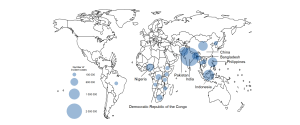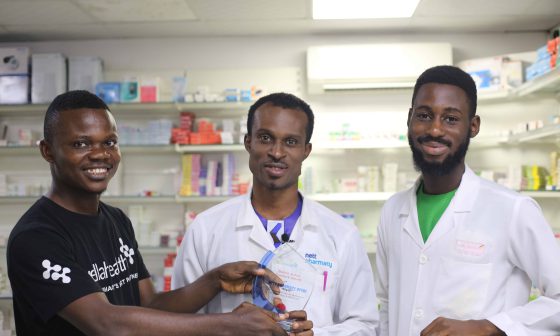Yearly, on the 24th of March, the world marks World Tuberculosis Day to raise awareness about the devastating effects of the epidemic tuberculosis (TB) and the ongoing fight to eliminate it. This year’s theme, “Yes! We Can End TB,” reminds the public of our renewed commitment to achieving the crucial public health goal of ending tuberculosis.
The World Health Organization (WHO) commemorates World Tuberculosis Day on the 24th of March every year as the day reminds the world of a time in history when Dr Robert Koch discovered the bacteria Mycobacterium tuberculosis in 1882.
This year, as we mark World TB Day 2024, the world looks back on the giant strides made to eliminate TB and the many challenges that have hindered the goals set in motion to end tuberculosis.

Courtesy: Global TB Community Advisory Board
The Reality, Burden, and Impact of TB
Tuberculosis is a preventable and curable disease and is one disease with a significant global health burden. According to WHO, TB is a leading cause of death from a single infectious agent, topped by the coronavirus pandemic (COVID-19) but surpasses HIV/AIDS. The World Health Organization’s global tuberculosis report in 2022 reported that about 1.3 million people died from TB in 2022 (including 167,000 people with HIV).
Tuberculosis is a disease that affects every gender, race, and age in the world. In 2022, the largest number of new TB cases occurred in WHO’s Southeast Asia Region (46%), followed by the African Region (23%) and the Western Pacific (18%). Around 87% of new TB cases occurred in the TB high burden countries, with over two-thirds of the global total in Bangladesh, China, the Democratic Republic of the Congo, India, Indonesia, Nigeria, Pakistan, and the Philippines.

Courtesy: World Health Organization (2021)
Symptoms of TB
Symptoms of TB disease depend on the extent, location of disease spread, damage, and immunity of an individual. Tuberculosis most commonly affects the lungs and the common symptoms are:
- prolonged cough (sometimes with blood),
- fever,
- night sweats,
- chest pain,
- body weakness and fatigue, and
- weight loss.
Tuberculosis can affect the kidneys, brain, spine, and skin with varying presentations
Challenges facing the fight to end TB
Emerging multidrug-resistant TB strains present a major challenge in the fight to eliminate the disease. Improper use and prescription of drugs, production and marketing of low-quality drugs, and patients not adhering to their medications cause drug resistance in medicine. The multidrug-resistant strains are more difficult and expensive to treat, requiring longer treatment regimens with harsher side effects.
Another challenge facing the fight to stop TB is in those who are immunocompromised. Reports show that people living with HIV are 16 times more likely to fall ill with TB disease than people without HIV. In an immunocompromised state, individuals living with the immunodeficiency virus have a tougher time combating this virulent bacteria, as TB is the leading cause of death in people living with HIV.
What must be done: Collective action to end TB
As the world celebrates World TB Day 2024 and in line with the theme for this year, individuals, communities, healthcare providers, governmental and non-governmental agencies, and policymakers have a role to play in the fight to end TB.
Education and programs geared towards learning about TB symptoms, transmission, and prevention methods must continue to be done. Anybody with symptoms such as persistent cough, high-grade fever, drenching night sweats, and/or weight loss must visit a healthcare center and consult a healthcare professional. Early diagnosis and treatment play a crucial role in preventing the spread of TB.
When individuals receive a TB diagnosis, their family, friends, community, and healthcare providers should provide them with support and counseling to ensure they complete the treatment prescribed by the doctor. This collective effort will help reduce the burden of multidrug-resistant TB.
To achieve a world free of this deadly disease, the Government and Non-governmental agencies should keep raising awareness, providing resources, funding TB diagnostics and treatment, and actively participating in TB research to reduce the incidence and prevalence of TB.
To actualize this dream, it is essential and crucial to strengthen the healthcare system and engage in community efforts, organizing programs and utilizing donations towards the fight to end tuberculosis in every community.
Conclusion
In conclusion, as we collectively say “Yes!” to ending tuberculosis with increased awareness, commitment, and coordinated action from all stakeholders, we can create a future where this disease is no longer a threat to public and global health.
Together, we can end TB.
By Dr Ifeoma Uduh, Dr John Afam.







Super work